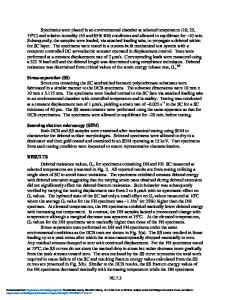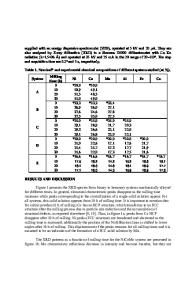Microstructural Evaluation and Mechanical Properties of Al1050/TiO 2 -Graphite Hybrid Nanocomposite Produced Via Frictio
- PDF / 11,824,680 Bytes
- 19 Pages / 593.972 x 792 pts Page_size
- 31 Downloads / 312 Views
OWING to their high specific strength, aluminum and its alloys have been established as competitive candidates in automobile and aerospace industries. Given that in most engineering systems two or more counterparts operate mutually, contacting surfaces play a crucial role in determining the efficient duty cycle during the service condition. In this regard, to achieve the targeted tribomechanical properties at the surface, such as enhanced strength and elastic modulus, besides the desired intrinsic properties of the substrate, surface aluminum matrix composites (SAMCs) can be considered as a practical solution.[1,2] Given the problems associated with the conventional fusion-based processes of fabrication of SAMCs, such as laser surface engiMOHAMMAD FARSHBAF AHMADIPOUR, MOJTABA MOVAHEDI, and AMIR HOSSEIN KOKABI are with the Department of Materials Science and Engineering, Sharif University of Technology, P.O. Box 11365-9466, Azadi Avenue, 14588 Tehran, Iran. Contact e-mail: [email protected] Manuscript submitted August 4, 2018. METALLURGICAL AND MATERIALS TRANSACTIONS A
neering[3] and plasma spray,[4] friction stir processing (FSP) represents a novel solid-state fabrication method. At the early ages of introduction of FSP, this method was frequently applied for microstructural modification of the cast and wrought specimens,[5,6] enhancement of superplastic properties,[7] and formation of intermetallic compounds (IMCs).[2,8] However, FSP was then used as a novel and prosperous technique to produce the surface composites.[9] The most conventional reinforcing particles employed as reinforcements to produce SAMCs by the FSP method include SiC, Al2O3, TiC, B4C, Fe3O4, and TiO2.[10–16] For instance, dispersion of the TiO2 particles throughout the Al1050 matrix by the FSP method has been reported to improve the microhardness and wear rate of the Al1050/TiO2 composites.[17] In addition, graphite may also be added to the matrix as a reactive agent to form in-situ compounds, such as TiC[18] and Al4C3,[19] or to improve the tribological behavior through formation of a solid lubrication layer.[20,21] Nevertheless, uniform distribution of the graphite particles throughout the matrix is difficult to achieve because of the nonwettability of the graphite particles by liquid metal and the density differences between the
base metal and existing particles.[22,23] Consequently, FSP can be considered as an effective approach to produce graphite containing composites.[24] Hybrid composites may exhibit enhanced mechanical properties due to the integrated advantages of each reinforcing phase, in comparison to the composites reinforced by only one type of reinforcement.[25,26] Therefore, simultaneous use of a second reinforcing agent along with the graphite may compensate for the lack of strength while keeping the improved wear characteristics.[27] A combination of graphite and SiC particles was used by Sharma et al.[28] where the mechanical properties of the Al6061/SiC-graphite hybrid composite surpassed the mechanical properties of both the
Data Loading...











